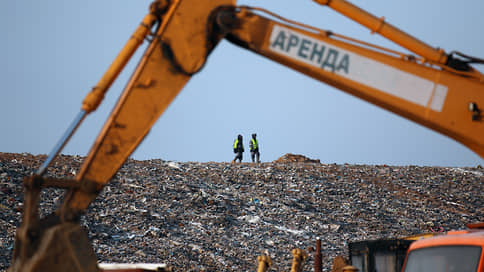Experts reduced the forecast of wheat export

The supply of Russian wheat abroad following the results of the agricultural year ending on June 30 will be reduced by 20%. This is due to the failure of supplies in the second half of the season, which is why the farmers have not yet managed to choose the volume of the export quota allocated by the authorities. Negative business profitability demotivates exporters. The conjuncture can help reduce export duties, count on the market.
The export of wheat in the current agricultural year (the period from June 2024 to the end of June 2025) will decrease by 19.8% by the year, amounting to 41.7 million tons, follows from the consensus of the price of price indices (CCI). Regarding February, the expectations were reduced by 2.3%. The Director of the “Council of Ministers” Andrei Sizov evaluates the volume of wheat exports in the ending agricultural year of 40.9 million tons, which is 22% lower than the year by the year.
The head of the Rusagrotrans analytical center Igor Pavvensky predicts exports at 41.5 million tons. A decrease in the year by the year will be 25.2%. The expert explains that in August – December export exceeded the indicators of last season, but has significantly decreased since January. Dmitry Krasnov, Director of the Competence Center in the Agro -Industrial Complex, says that in January -April, wheat export fell by 40% by the year, for March -April – by 60%.
The Ministry of Agriculture “Kommersant” explained that the pace of shipment is comparable to the average values for the previous three seasons. The export volume corresponds to the country’s capabilities without prejudice to internal food security, added there.
Mr. Krasnov connects the fall, including with low reserves in key export regions of Russia, where drains in warehouses today are one and a half times lower than a year earlier, due to a relatively low harvest and high rate of shipments in the first half of the season. The interlocutor “Kommersant” in the agricultural market explains that there are few grains in the south of the country. There are reserves in the Volga region, but due to high tariffs for railway transportation, their delivery often becomes unprofitable, he says.
Dmitry Rylko, CEO of the Institute of Conjuncture of the Agrarian Market, calls the key factor in foreign supplies in the second half of the season, and also notes the reduction in world prices for wheat. The National Product Exchange index for products on June 4 amounted to 15.9 thousand rubles. per ton on the basis of the port of Novorossiysk. By the end of last year, the value decreased by 12.7%. The CCC estimates the export wheat index of $ 243 per ton at the end of May. By the year, the indicator has lost 3.2%by a year, 0.8%per week.
But finding buyers is not easy.
Mr. Rylko explains that there is already a new crop from other countries on the market, which is sold on average by $ 20 per ton cheaper than the Russian wheat of the old crop. Products are considered non -competitive. For a long time, the margin of exporters, according to the expert, was negative, now it is about zero.
Mr. Rylko explains that the situation can change only in case of a sharp decrease in domestic wheat prices in the Russian market. But selling a crop is cheaper than farmers is not yet ready. According to the “Council of Ministers”, the average cost of the third class wheat in the Russian market on May 28 amounted to 15.5 thousand rubles. per ton, adding 18.7%per year.
The drop in export in the second half of the season is above expectations.
The quota of wheat, which was established by the federal authorities, operating from February 15 to June 30, is 10.6 million tons, of which 80% of the main part and 20% are additional. According to the Ministry of Agriculture on May 30, which leads Interfax, 23.6% of this volume, 2.5 million tons remained retained. In attempts to stimulate the activity of large exporters, the government last week increased the maximum amount of additional quota for companies from 45% to 300% of the main (see Kommersant on June 2).
Mr. Krasnov doubts that the measure, introduced only until the end of the season, will be effective: a significant share of the residual quota will not be chosen. Vice President Gazprombank Daria Snitko believes that she will not have a significant impact on the volume of export, although it can affect the distribution of supplies between the main players. The business of large suppliers is developing in the context of common trends: additional quotas with negative profitability are unlikely to stimulate their shipments, says the source of Kommersant in the market.
The interlocutor of Kommersant in one of the agricultural holdings knows that the Ministry of Agriculture is considering adjusting the formula for calculating the export duty, the main goal will be its actual zeroing.
Another important measure, according to him, could be a decrease in tariffs for transshipment in Black Sea terminals: in five years they doubled. The Union of Exporters and Grain Manufacturers suggests that exports in the future can increase prices in the world market, increase the supply of grain in the domestic market and weakening the ruble.
So far, analysts have a relatively positive forecast for the upcoming agricultural year. Igor Pavvensky expects that next year the export of wheat will be 42–45 million tons, adding 1.2–8.4% a year to the year, connecting dynamics with the growth of the crop. Andrei Sizov suggests that the indicator will reach 40.8 million tons, which is actually preserved at the level of the current year. Dmitry Krasnov believes that the growth of demand from the countries of the Middle East, North Africa and Southeast Asia will positively affect the volume of the crop. But negative growth in world production can be negative on the market: the harvest is waiting in key exporting countries.








